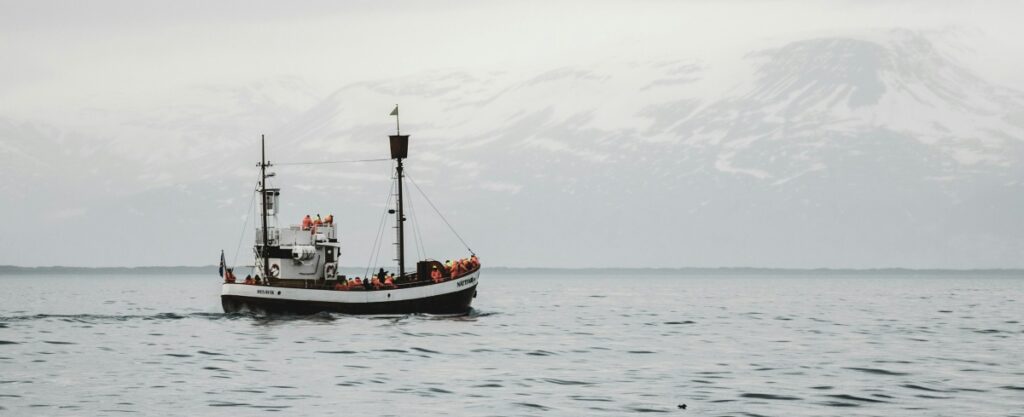
BLUE ECONOMY SERVICES
Site typology, location & description
The Greenland-Scotland Ridge (GSR) is an underwater ridge system that separates the Nordic Seas from the Atlantic Ocean. It stretches from the northern tip of Scotland to the southern tip of Greenland. The conditions in the GSR area influence nutrient distribution, habitat availability, and migration patterns in the North Atlantic, and Nordic Seas. The principal species targeted in commercial fisheries in the North Atlantic-Greenland domain include cod, haddock, saithe, various redfish species, Greenland halibut, capelin, Atlanto-Scandian herring, mackerel, and blue whiting.
Site challenges
In GSR warm saline water from the Atlantic Ocean flows northward into the Norwegian Sea, where it undergoes atmospheric-induced cooling and mixing with colder waters. This process leads to the formation of denser water masses. These denser water masses eventually sink and flow southward along the seafloor, returning to the Atlantic Ocean through gaps and channels in the GRS. There is a complex interplay of deep-water formation, upwelling, and mixing processes in the area. The dynamics of the GRS is crucial for the future of fisheries in the North Atlantic and Greenland, as it plays a significant role in heat transport from the North Atlantic to the Arctic, which has undergone significant changes since the end of 20th century. Climate change is expected to have profound further effects on the heat exchange within the ridge influencing distribution and abundance of fish species in the region. Among commercially important species, Atlanto-Scandian herring, mackerel, and blue whiting are particularly dependent on the stable North Atlantic water temperature for reproduction and sustaining healthy populations. Cold-adapted species like polar cod may decline as temperatures warm, while species like Atlantic cod or some redfish species may expand their range into northern waters.
Past work and existing data
There is an available dataset of 30 years (1990-2019), which comprises biogeochemical samples analysed by the Plankton Chemistry Laboratory at the Institute of Marine Research (IMR), collected from the Norwegian, Greenland, and Iceland Seas. Recent variations in oceanic transports across the Greenland–Scotland Ridge are studied based on more than 20 years of observations. There are also estimates of volume, heat, and freshwater exchange across GSR based on 10 years of observations, as well as studies on overflow of cold water across the Iceland–Faroe Ridge based on 1-year observations. FESOM2 ice-ocean simulations with at about 4 km resolution in the area and simulations of FESOM2 coupled to ReCOM3 with a resolution of about 24 km are available from 1950 until 2019 for assessment of quality of large-scale solution.